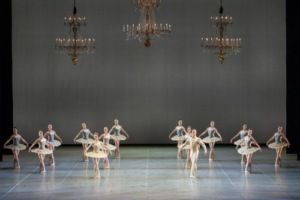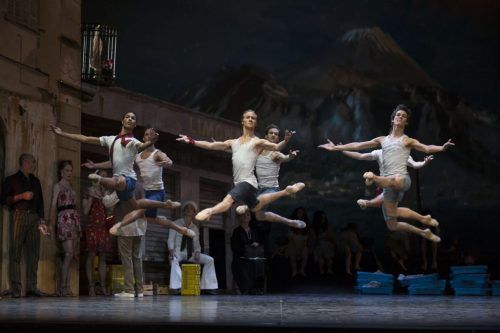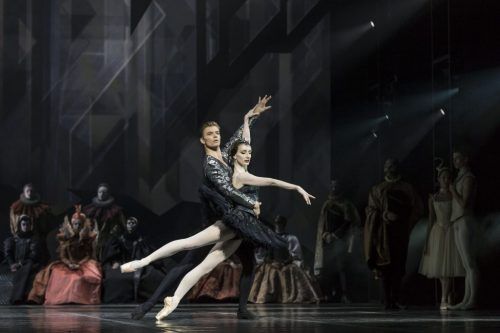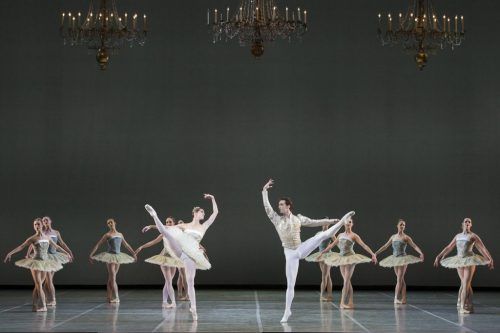Things to do
Ballet Review: travel through the history of dance with the sensational Ballet de Luxe
This article is more than 8 years old.
Don’t miss a sensational performance at the Old Stage covering the history of dance.

The third act. ‘Theme and Variations’ (photo: Costin Radu)
The Royal Danish Theatre premiered with Ballet de Luxe, a beautiful time travel through the history of ballet on March 22 at the Old Stage.
Before I start enthusing about this wonderful ballet, I have to pay tribute to the Old Stage, which is worth a visit even when it’s empty. The red velvet that lines the hall and the golden detail that covers the walls in combination with the massive chandelier invites visitors into a dream world.
But even though the interior is impressive, it ceased to be the main spectacle the moment the orchestra started to play and the dancers broke into movement.
The journey begins …
The ballet is divided into three acts of which the first one is devoted to Danish choreographer August Bournonville. The second act covers the French romantic and Russian classics, whereas the third one is a tribute to French-Russian dance legend Marius Petipa.
Due to the various styles in the three acts, the whole performance is entertaining and diverse. Starting with a light and bright pas de deux as an introduction, this performance is made for everyone: ballet newcomers and long-standing fans.
Meet Denmark’s most famous ballet dancer
Bournonville is known as the founder of Danish ballet and for the harmony in his choreographies.
The first act of Ballet de Luxe included two wonderful pas de deux – The Flower Festival in Genzano and William Tell – which delighted the audience with their playful and flirty details.
A group performance of Napoli followed with scenes of a perfectly synchronous corps de ballet. After the first act I am already amazed, not only by the fantastic ballet but also by Bournonville’s choreographies.
In general, the scenery was simple and the dancers wore traditional costumes. The simplicity allowed the audience to focus on the precision and countenance of the dancers. Accompanied by the Royal Danish Orchestra, the atmosphere was electric.
And here come the classics
After a break the second act started with a pas de deux of Coppelia and continued with classics such as Swan Lake, the Tchaikovsky pas de deux and Romeo and Juliet.
In contrast to the playful start, the choreography of Coppelia incorporated more graceful and elegant movements.
And then a perfect performance of Swan Lake included stunning pirouettes that seemed to never end. The Tchaikovsky choreography impressed with an airy pas de deux and various lifts. Romeo and Juliet started with an intimate and romantic pas de deux.
Last but not least
After the second break, the last act started: the impressive performance of George Balanchine’s Theme and Variations with the corps de ballet on full view. The choreography was created in tribute to Marius Petipa, the father of the classic ballet.
At some points I was just overwhelmed – the principal dancers, soloists and the corps de ballet united on stage to deliver a magnificent performance and a superb finale.
Not yet convinced?
This ballet was definitely fantastic and its diversity was one of the persuasive factors that made me enjoy the whole evening.
So take the chance to join ballet lovers and enjoy some beautiful time-travelling through the history of ballet.













































